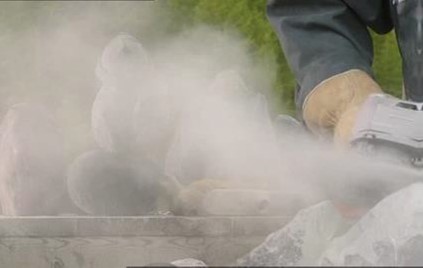
Respirators, wet-cutting, and tools fitted with vacuum removal systems can keep crystalline silica dust from reaching OSHA’s 50 micrograms per cubic foot of air limit. Hence the need for dust shrouds and water suppression. Since the nature of construction and other “blue collar” industries create large volumes of silica dust, OSHA regulations concentrate on collecting and containing it before it can be inhaled. These construction regulations include written exposure-control plans, training regimens, and housekeeping. Smoking compounds the risk.ĭespite a 50-year history of working to control potential hazards presented by silica dust, OSHA only over the last several years has developed consistent, rigid rules to protect workers. The lesions on the lungs the dust causes also makes sufferers more susceptible to tuberculosis, kidney disease and lung cancer.

In severe cases this may result in silicosis, an incurable, sometimes fatal, disease. This causes scar tissue to form, reducing the lungs’ capacity to gather oxygen.

Nearly microscopic, crystalline silica dust is abrasive and can scrape and tear the lining of nasal and respiratory passages. The operator of the grinder, drill, saw or other tool, as well as coworkers and bystanders within a wide radius of the work being performed, will be exposed to the particles. It becomes a problem when cutting, grinding, drilling, sand blasting or other routine construction activities involving these products creates respirable crystalline silica dust. Many Construction Materials Contain SilicaĬrystalline silica is a component of many construction materials including stone, concrete, cement, drywall, ceramic and brick. While silica dust can be useful, when tiny particles – a fraction the size of a grain of sand – become airborne, they can be inhaled and drawn into mucous membranes and lungs.Ģ. Silica is also used in baking, pharmaceutical manufacturing, and other applications. It is used to prevent powdery foods from caking and beverages from becoming cloudy or foamy. Silica has a variety of important uses in several industries. They combine to create quartz and other forms of crystalline silica. Oxygen and silicon are the two most prevalent elements in the earth’s core. But, what is silica dust? Here are 5 things you need to know:
#Silica dust exposure portable#
#Silica dust exposure professional#




 0 kommentar(er)
0 kommentar(er)
